Where is Bundala National Park
Bundala National Park is an internationally important wintering ground for migratory waterbirds in Sri Lanka. Bundala harbors 197 species of birds, the highlight being the greater flamingo, which migrates in large flocks.
Bundala was designated a wildlife sanctuary in 1969 and redesignated to a national park on 4 January 1993.
In 1991 Bundala became the first wetland to be declared a Ramsar site in Sri Lanka. In 2005 the national park was designated as a biosphere reserve by UNESCO, the fourth biosphere reserve in Sri Lanka.
The national park is situated 245 kilometers (152 mi) southeast of Colombo.
Bundala National Park is an important wintering ground for migratory waterbirds in Sri Lanka. It was designated a wildlife sanctuary in 1969 and redesignated a national park in 1993. Bundala harbors 197 species of birds, the highlight being the greater flamingo, which migrate in large flocks.
History of Bundala National Park
The Bundala National Park area was declared a wildlife sanctuary on 5 December 1969 and was upgraded to a national park on 4 January 1993 with a land area of 6,216 hectares (24.00 sq mi).
However, the park was re-gazetted in 2004 and the original park was reduced to 3,698 hectares (14.28 sq mi). In 1991, Bundala became the first site in Sri Lanka to be designated a Ramsar wetland.
In 2005, Bundala was declared a Man and Biosphere Reserve by UNESCO. In January 2006, an area adjacent to Bundala covering an area of 3,339.38 hectares (12.8934 sq mi) was declared the Wilmanna Sanctuary.
Bundala was the first site in Sri Lanka to be designated a Ramsar wetland. In 2005, Bundala was declared a Man and Biosphere Reserve by UNESCO. An area adjacent to Bundala covering an area of 3,339.38 hectares (12.8934 sq mi) was declared as Wilmanna Sanctuary.
Physical Features of Bundala National Park
The eastern Vijayan series hornblende-biotite gneiss underpins the majority of the area.
The area has a low-country dry zone climate. The average relative humidity in the area is 80%. The national park has five shallow, brackish lagoons, three of which have salt pans.
Bundala lagoon is 520 hectares (2.0 square miles), Embilikala lagoon is 430 hectares (1.7 square miles), Malala lagoon is 650 hectares (2.5 square miles), Koholankala lagoon is 390 hectares (1.5 square miles), and Mahalewaya lagoon is 260 hectares (1.0 sq mi).
The Koholankala and Mahalewaya rivers are nearly completely developed for salt production. The climate is tropical monsoonal, with an average annual temperature of 27 °C (81 °F).
The annual rainfall ranges between 900 and 1,300 millimeters (35 and 51 inches), with a dry period lasting from May to September.
The park’s elevation ranges from sea level to 10 meters (33 ft). The park was impacted by the Indian Ocean tsunami in 2004.
The park suffered little damage as a result of the sand dunes’ protection.
The park’s elevation ranges from sea level to 10 meters (33 ft). The climate is tropical monsoonal, with an average annual temperature of 27 °C (81 °F). The Koholankala and Mahalewaya rivers are nearly completely developed for salt production.
Flora Diversity of Bundala National Park
The national park’s ecological areas include seven terrestrial habitat types and six wetland types. The most abundant plant life is dry thorny shrubs and herbs.
The park has been home to 383 plant species from 90 different families. “All of the lagoons’ phytoplankton is dominated by blue-green algae,” including Macrocystis, Nostoc, and Oscillatoria.
Hydrilla grows abundantly in the Malala-Ambilikala Lagoons. In the marshes and streams, water hyacinth, water lilies, and Typha angustifolia reed beds can be found.
Acacia scrubs dominate the vegetation, which includes Dichrostachys cinerea, Randia dumetorum, Ziziphus sp., Gymnosporia emarginata, Carissa spinarum, Capparis zeylanica, and Cassia spp, Bauhinia racemosa, Salvadora persica, Drypetes sepiaria, Manilkara hexandra (Palu in Sinhalese), and the less common Chloroxylon swietenia, Azadirachta indica, and Feronia limonia are the forest trees.
The environmental conditions of the national park are ideal for halophyte plants. Salt-tolerant plants include Salicornia brachiata and Halosarcia indica.
Lumnitzera racemosa trees are common in the Bundala lagoon area’s small degraded patch of mangrove. The Palu tree Manilkara hexandra forest on the sand dunes east of Bundala village is a one-of-a-kind forest in Sri Lanka.
The national park’s ecological areas include seven terrestrial habitat types and six wetland types. The most abundant plant life is dry thorny shrubs and herbs. Manilkara hexandra forest on the sand dunes east of Bundala village is a one-of-a-kind.
Fauna Diversity of Bundala National Park
Bundala National Park has been designated as an outstanding Important Bird Area in the wetlands of South India and Sri Lanka.
The national park is home to 324 vertebrate species, including 32 species of fish, 15 species of amphibians, 48 species of reptiles, 197 species of birds, and 32 species of mammals.
Among the invertebrates are 52 species of butterflies. Bundala’s wetland habitats support approximately 100 species of water birds, half of which are migrant birds.
58 of the 197 avifaunal species are migratory.
In 2005, the Department of Wildlife Conservation and the Field Ornithology Group of Sri Lanka collaborated to launch the National Bird Ringing Programme (NBRP) in Bundala.
The highlight is the greater flamingo Phoenicopterus roseus, which visits in large flocks of over 1,000 individuals from India’s Rann of Kutch.
Waterfowl (lesser whistling duck Dendrocygna javanica, garganey Anas querquedula), cormorants (little cormorant Phalacrocorax niger, Indian cormorant P. fuscicollis), cormorants (Indian cormorant P. fuscicollis), large water birds (grey heron Ardea cinerea, black-headed ibis Threskiornis melanocephalus, The national park is home to rare birds such as the black-necked stork Ephippiorhynchus asiaticus, the lesser adjutant Leptoptilos javanicus, and the Eurasian coot Fulica atra.
The Bundala forests are still home to a few Asian elephants (Elephas maximus).
Toque macaques are among the other mammals seen in the park. Common langur, Macaca sinica Jackal, Presbytis entellus Leopard, Canis aureus Panthera pardus, Felis viverrinus (fishing cat), Felis rubiginosa (rusty-spotted cat), and mongoose Wild boar, Herpestes spp. Mouse deer, Sus scrofa Indian muntjac, Tragulus meminna Spotted deer, Muntiacus muntjak Sambar C. Unicolor, black-naped hare Cervus axis Lepus nigricollis, Manis crassicaudata, and Hystrix indica are three species of porcupine.
Bundala is home to a variety of fish species, including saltwater dispersants Anguilla bicolor and marine forms. Brackish water forms of Ambassis gymnocephalus freshwater forms Chanos chanos, and saltwater forms Channa striata.
The herpetofauna of Bundala includes two endemic species, a toad and a snake, Bufo atukoralei and Xenochrophis asperrimus, respectively.
Crocodylus palustris, Crocodylus porosus, common monitor Varanus bengalensis, star tortoise Geochelone elegans, python Python molurus, rat snake Pytas mucosus, endemic flying snake Chrysopelea taprobana, cat snakes Boiga spp., and whip snakes Dryophis spp. are among the reptiles.
Bundala’s nearby seashore serves as a breeding ground for all five species of globally endangered sea turtles that migrate to Sri Lanka.
Bundala National Park has been designated as an outstanding Important Bird Area in the wetlands of South India and Sri Lanka. The highlight is the greater flamingo Phoenicopterus roseus, which visits in large flocks of over 1,000 individuals from India’s Rann of Kutch.
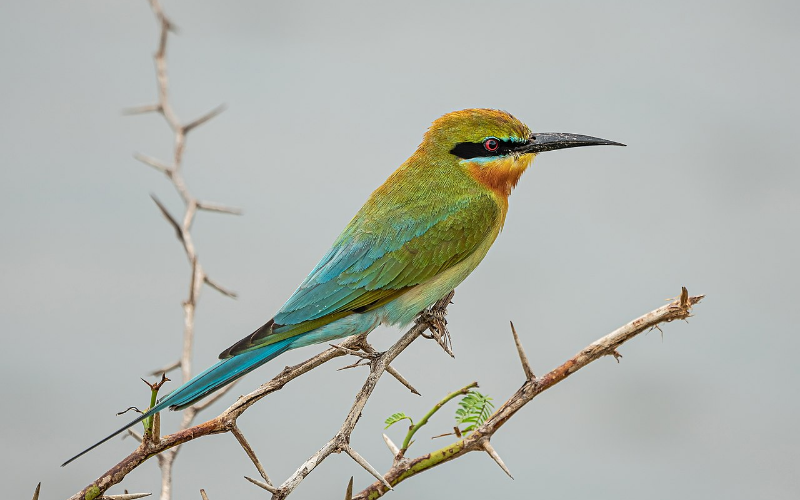
Threats and Conservation
The drainage of excess water from irrigation systems and the release of sludge from the saltern into Bundala lagoon have altered the water quality in the lagoons.
The habitats of wading birds and wildlife in the shrub forest and dunes are under threat due to the spread of two invasive alien plants, Prosopis juliflora, and Opuntia dillenii, around the tidal plains of the Malala-Ambilikala Lagoons, as well as the sand dunes and nearby scrub forests.
Uncontrolled livestock herds facilitate the spread of Prosopis juliflora.
Macaque monkeys and possibly other animals and birds that eat the fruits spread the seeds of Opuntia cactuses (called Kathu potak in Sinhala).
It is also spread by people who cut down the cactus but leave the cuttings, which re-sprout. So far, no biological control measures have been implemented for the moth Cactoblastis cactorum.
Manual removal of the cactuses will be impossible due to their extensive spread.
A turtle conservation project was launched, as well as an invasive alien plant eradication program aimed at removing Prosopis juliflora and Opuntia dillenii.
The proposed conservation measures include re-demarcation of the park’s boundary and broadening the boundary to include the northern scrubland, resettlement of families living within the park, a program to control the spread of invasive alien plants, the construction of irrigation structures to stop the flow of irrigation water, and livestock grazing management.
The Malala-Ambilikala Lagoons National Park in Sri Lanka is under threat. The habitats of birds and wildlife are under threat from the spread of invasive alien plants. Manual removal of the cactuses will be impossible due to their extensive spread.
Conclusion
In conclusion, Bundala National Park in Sri Lanka is a stunning destination that offers visitors a chance to experience the island’s natural beauty and wildlife in a unique and unforgettable way. With its diverse ecosystems, rare wildlife, and stunning coastal landscapes, this park is a must-visit destination for nature and wildlife enthusiasts alike.
At Ceylon Wild Tours, we are dedicated to helping visitors experience the very best of Sri Lanka’s natural beauty and wildlife, and Bundala National Park is certainly no exception. Our expert guides are passionate about sharing their knowledge and expertise, and ensuring that every visitor has a truly unforgettable experience.
Whether you’re interested in exploring the park’s wetlands and lagoons, spotting rare birds and reptiles, or simply taking in the stunning coastal landscapes of the area, Bundala National Park has something to offer everyone.
So why not plan your visit to Bundala National Park today and discover the wonders of this breathtaking destination? With Ceylon Wild Tours, you can rest assured that you’ll have a trip of a lifetime, filled with unforgettable memories and experiences that will last a lifetime.

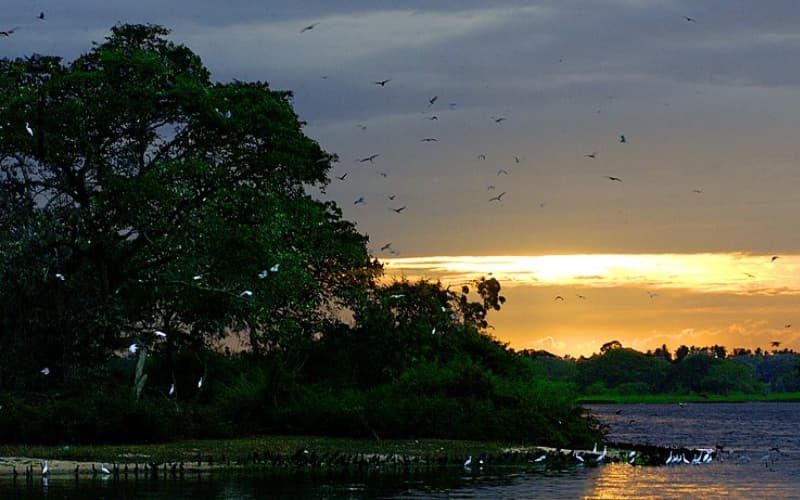



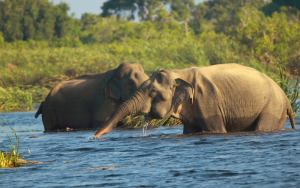
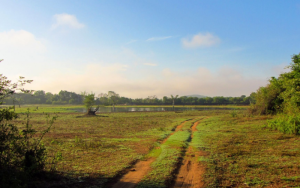
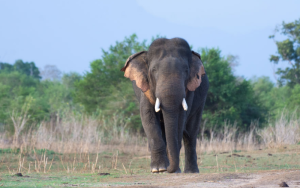
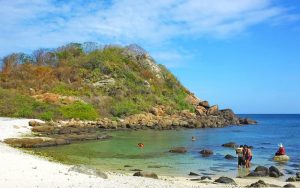
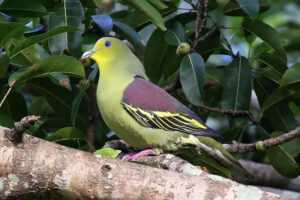
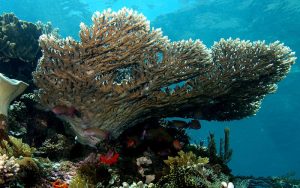

170 Replies to “Bundala National Park | Sri Lanka”
What?s Going down i’m new to this, I stumbled upon this I have discovered It positively useful and it has helped me out loads. I hope to give a contribution & aid other users like its aided me. Good job.
I’m blown away by the quality of this content! The author has clearly put a huge amount of effort into investigating and arranging the information. It’s inspiring to come across an article that not only gives useful information but also keeps the readers captivated from start to finish. Kudos to her for making such a brilliant work!
I am usually to running a blog and i really appreciate your content. The article has really peaks my interest. I am going to bookmark your site and keep checking for brand spanking new information.
This is the best weblog for anyone who needs to find out about this topic. You notice so much its almost exhausting to argue with you (not that I actually would need?HaHa). You positively put a new spin on a topic thats been written about for years. Great stuff, simply nice!